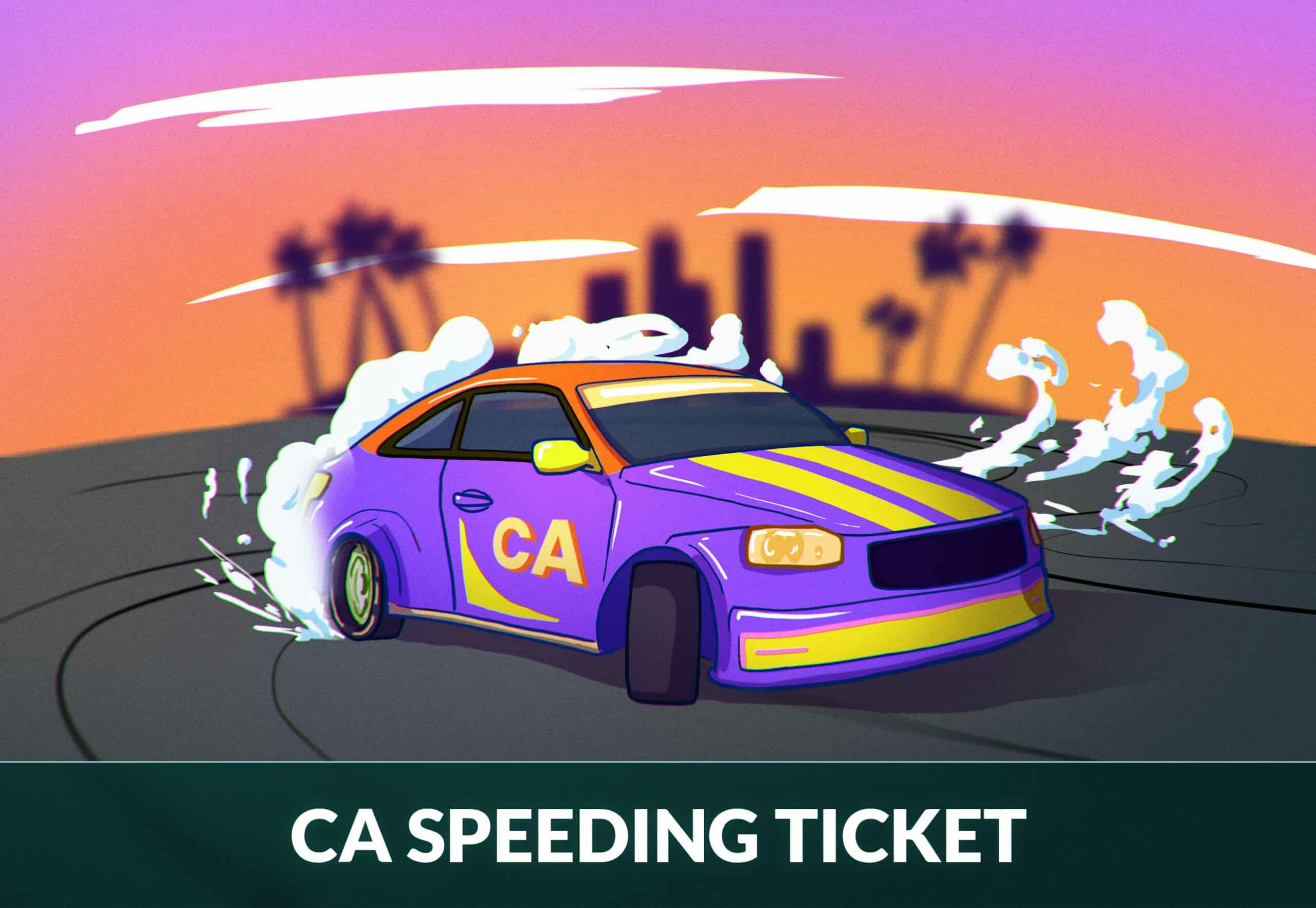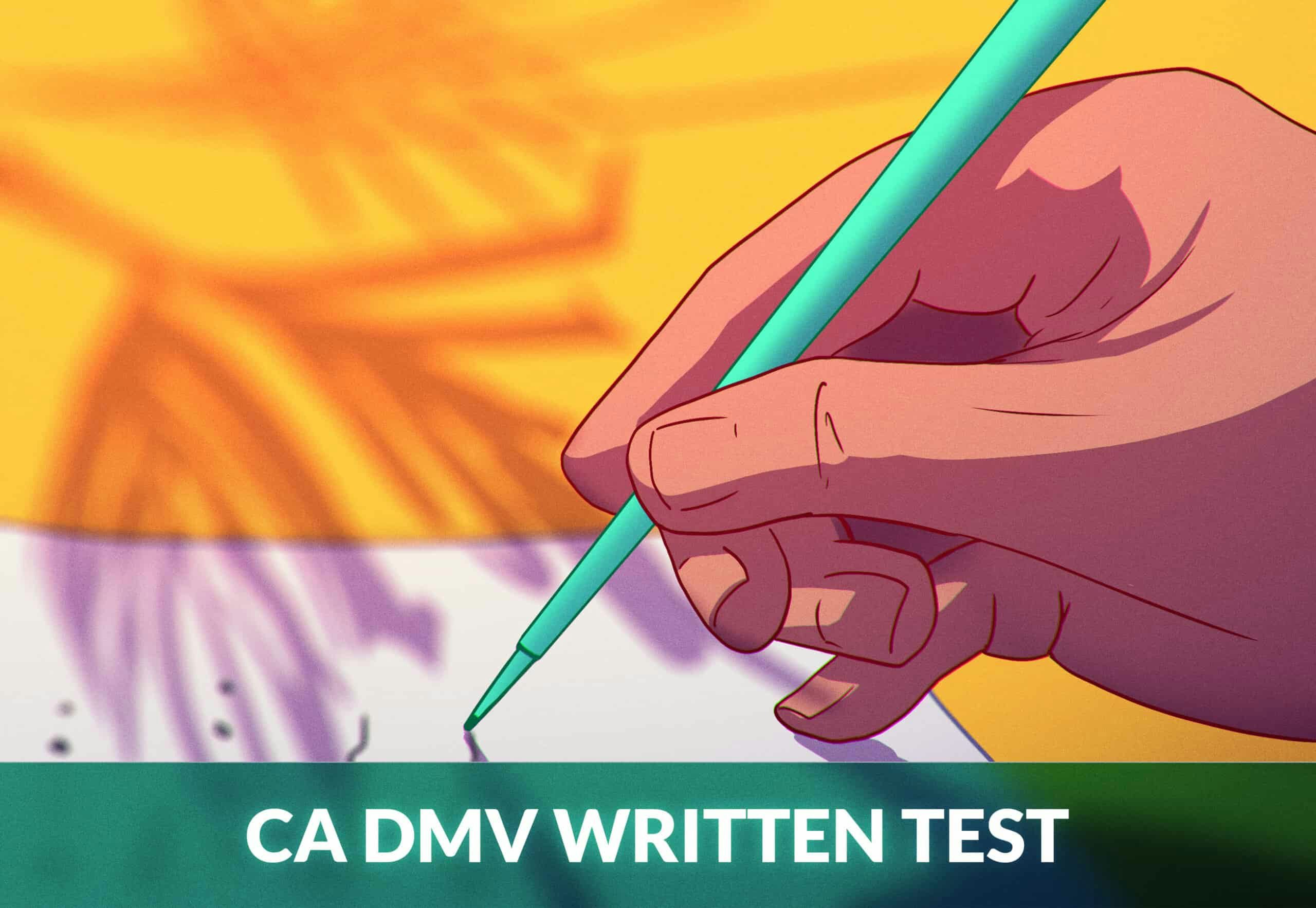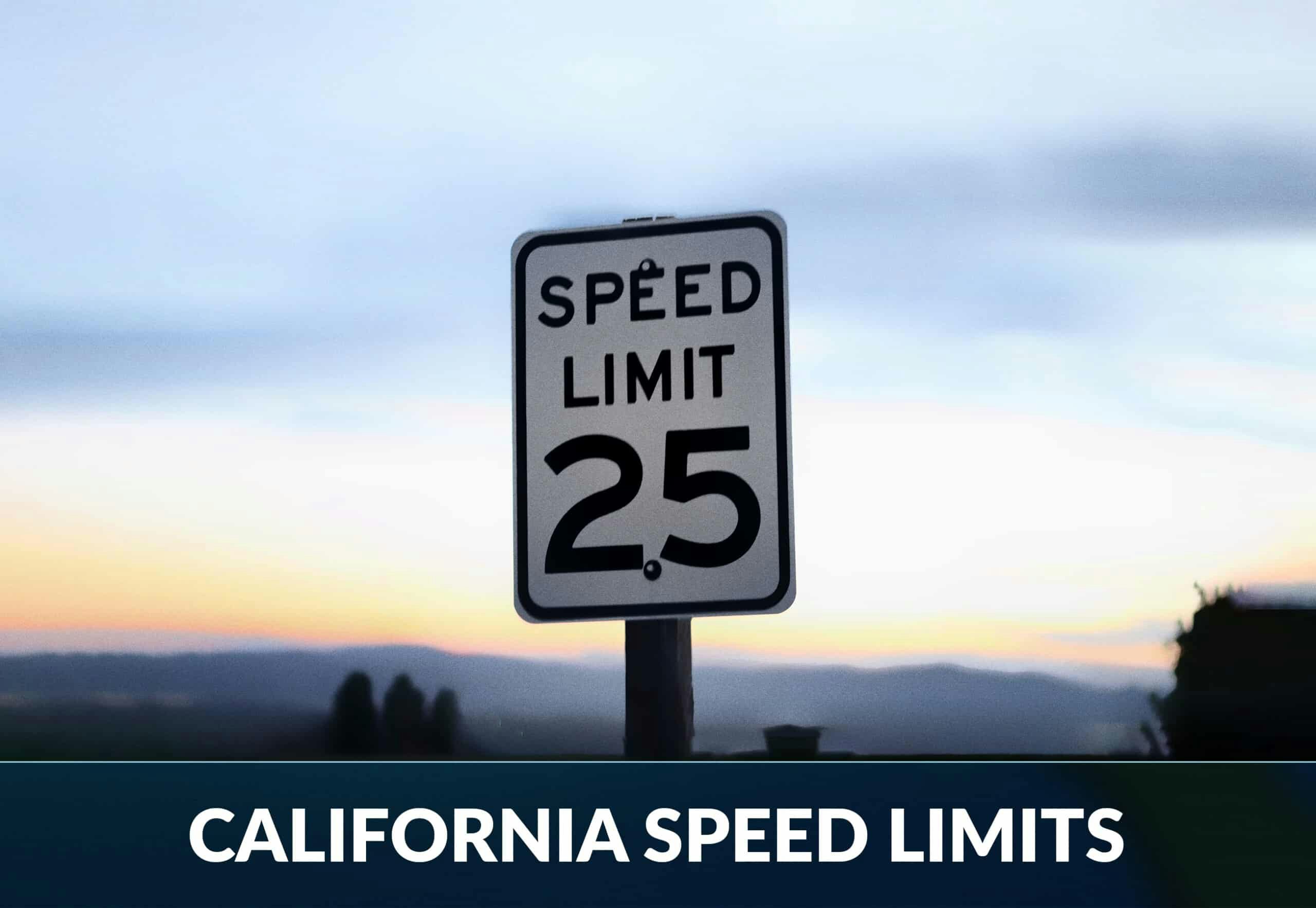
California Speed Limits & Laws Explained
This is a post about speed limits, the major speed laws & speeding. Today you’ll learn about:
- The dangers of speeding
- How weather- and road conditions dictate speed
- Maximum speed limits in California
- The major speed laws in CA and what they mean (like the basic speed law)
- Advisory speed limits
Let’s dive right in!
P.S. Click on a topic if you want to skip to it.
Speeding
Speeding isn’t worth it. You may save a few minutes, but you will also drastically increase the chance of being involved in a car accident.
Speed is directly related to the severity of the injuries in a crash – the faster you’re driving, the more likely the crash is to have a serious or fatal outcome.
A higher speed increases your stopping distance, which means you will be less likely to stop in time to avoid a hazard. Speeding and aggressive driving are one of the highest causes of fatalities on the road.
Adapt your speed to the conditions
Each driver is responsible to know the speed limit and maintain a safe speed at or below the speed limit.
In less favorable conditions, you must drive slower than the posted speed limit so you have time to stop in time for a hazard.
Such road conditions include:
- Dry, wet or narrow road surface
- Rain, fog or snow
- Slow moving traffic
- Pedestrians near the road
What Are the Maximum Speed Limits in California?
Speed limits show the maximum allowed speed in good weather and road conditions.
Here are the common maximum speed limits in California:
- When passing streetcars, buses or trolleys stopped at an intersection controlled by law enforcement/traffic lights – 10 mph
- In safety zones – 10 mph
- In alleys – 15 mph
- At blind intersections – 15 mph
- In residential and business districts – 25 mph
- Within 500 to 1000 feet of a school while children are outside – 25 mph
- On two-lane undivided highways – 55 mph
- On most California Highways – 65 mph
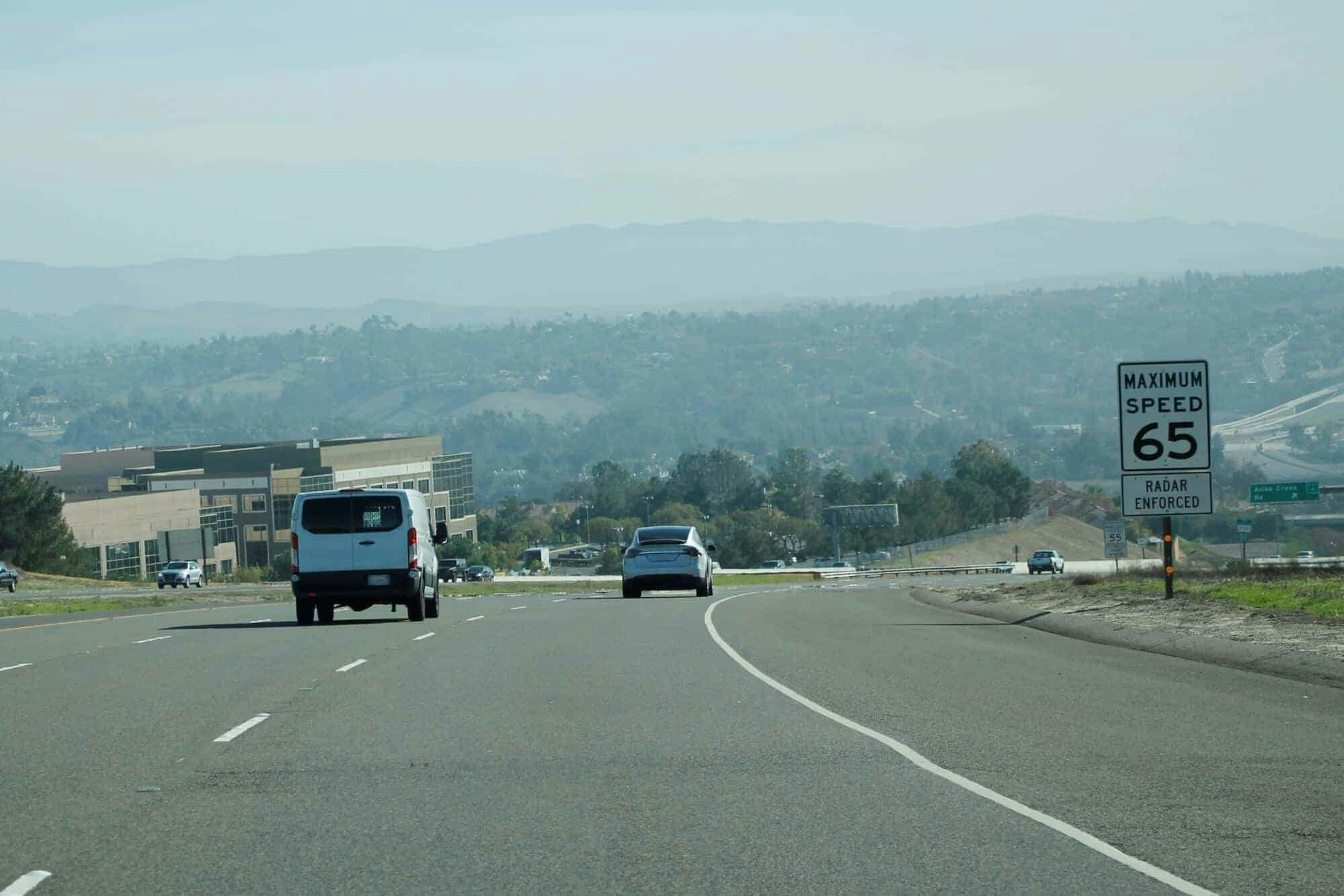
Maximum Speed Law
This law is set in place to reduce the amount and the severity of crashes. It states that you’re not allowed to drive faster than the speed limit under any circumstances. This act is called speeding.
Many drivers violate this law when passing other vehicles. Don’t make the same mistake – you’re never allowed to exceed the speed limit!
Basic Speed Law
You must never drive faster than what is safe for current conditions – this is called the ‘The Basic Speed Law’.
In bad conditions, e.g. heavy fog, you may be cited by law enforcement for driving for the conditions even if you’re driving below the speed limit.
Here are 4 factors to help you determine a safe speed:
- At what speed are other drivers driving? Are you driving faster?
- Is there a lot of traffic?
- What’s the conditions like? Is the road surface bad or good? How is the weather?
- Is it an urban or rural area? Are there pedestrians or other vulnerable road users nearby?
Minimum Speed Law
Driving too fast is against the law, but so is driving too slowly. The California minimum speed law states that you can be fined if you obstruct or delay traffic.
Driving too slowly can be just as dangerous as speeding since other road users won’t expect it.
If you can’t drive with the flow of traffic, keep right so other vehicles can pass on your left.
What Are Advisory Speed Limits?
Advisory speed limits are used to indicate the maximum speed that is safe to drive in good conditions. You are recommended to reduce your speed in these speed zones temporarily and display caution to get past safely.
Speed limit signs are generally placed before bends, curves and crests etc.
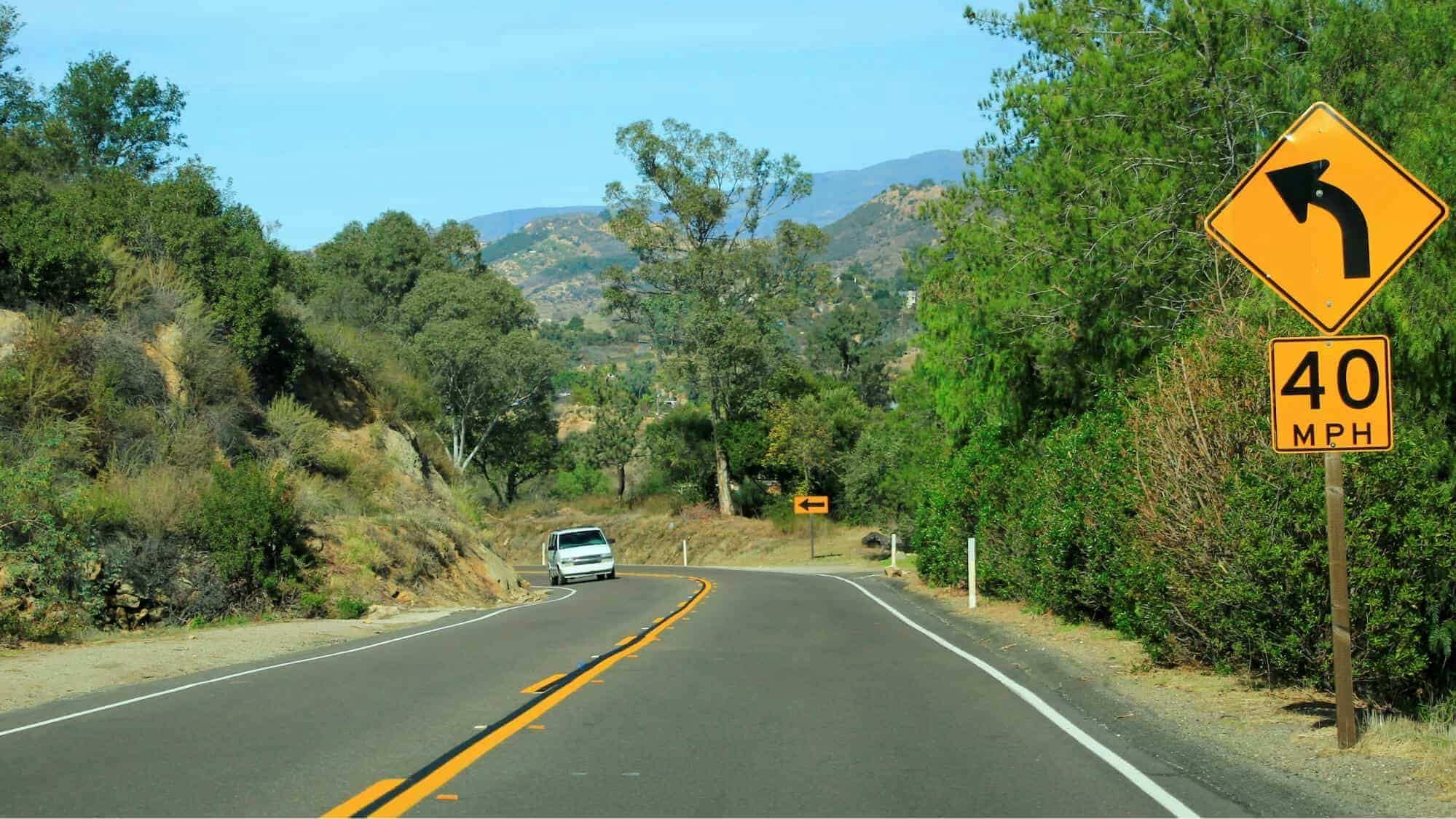

550+ exam-like questions
All you need to ace your test
Perfect for first-timers, renewals and senior citizens
Recommended articles
Country
Ace your DMV test, guaranteed

